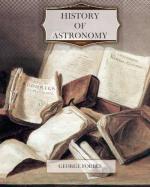|
This section contains 644 words (approx. 3 pages at 300 words per page) |

|
In ancient times, people watched the sky and used its changing patterns throughout the year to regulate their planting and hunting. The Sun seemed to move against the background of stars. A few bright objects (Mercury, Venus, Mars, Jupiter, and Saturn) wandered against the same background. Greek philosopher Aristotle (384-322 B.C.E.) tried to make sense of all this by proposing a system of the universe with Earth in the center (known as a geocentric system). Revolving around Earth were the Sun, the five known planets, and the Moon. This system satisfied the Greek desire for uniformity with its perfectly circular orbits as well as everyone's common sense of watching sunrise and sunset.
Greek astronomer and mathematician Ptolemy refined Aristotle's theory in 140 C.E. by adding more circles to obtain better predictions. For over a thousand years people used his scheme to predict...
|
This section contains 644 words (approx. 3 pages at 300 words per page) |

|


